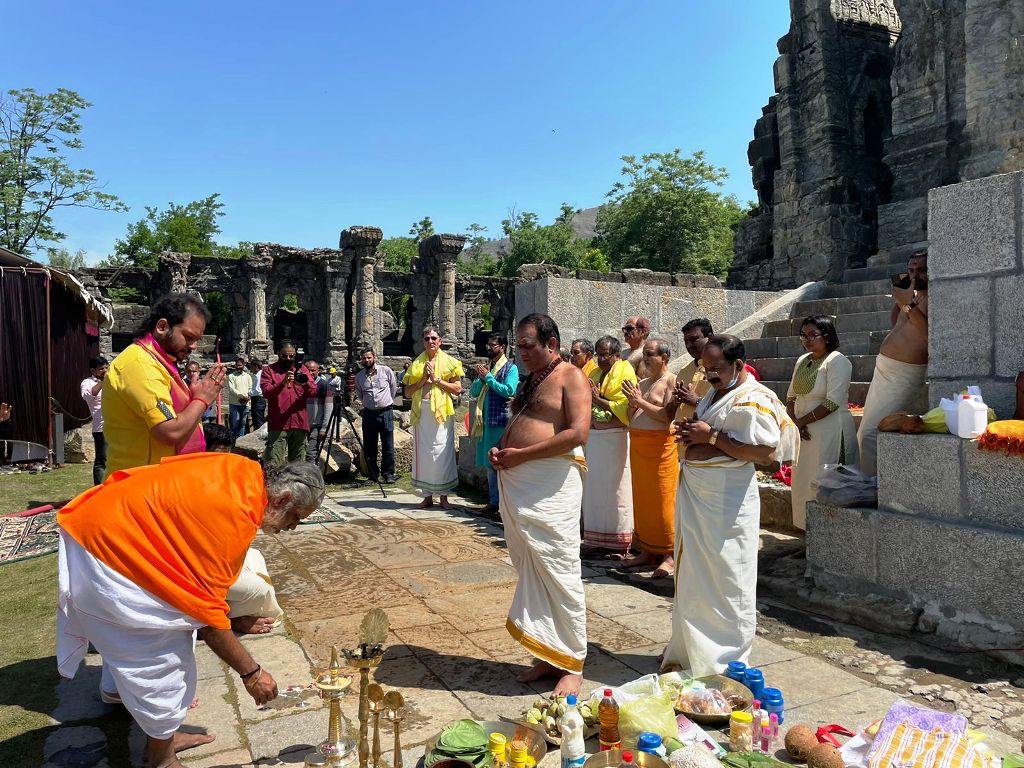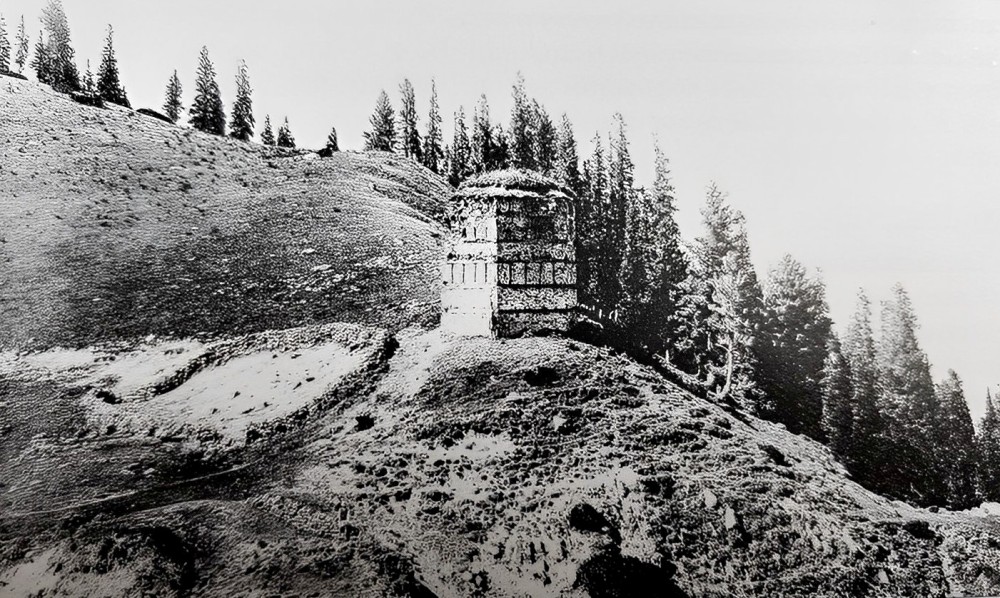Years after Alexander entered India, Indo-Greek relations cemented to the extent that the Greek kings appointed emissaries and ambassadors in the region. Megasthenes, one of the Greek envoys in Chandragupta Maurya’s court at Pataliputra visited and recorded the life in the neighbouring areas including Kashmir, reports Muhammad Nadeem

In the decades following Alexander the Great’s invasion of India in 326 BCE, a new era of cross-cultural exchange opened between the subcontinent and the Mediterranean world. As Alexander’s Generals carved out kingdoms from his fractured empire, they sought diplomatic and commercial ties with the powerful dynasties emerging farther east.
One of the most intriguing of these early encounters occurred when Seleucus I Nicator, founder of the Seleucid Empire based in Persia and Mesopotamia, sent an ambassador named Megasthenes to the court of Chandragupta Maurya, founder of the first pan-Indian empire in Pataliputra (modern Patna).
Megasthenes was a Greek historian and ambassador who lived in the fourth- century BCE. He was born around 350 BCE, though his exact origins are uncertain. Megasthenes accompanied Alexander the Great during his Indian campaign in 326 BCE, gaining first-hand experience of north-western India.
After Alexander’s death, Megasthenes became an ambassador for Seleucus I, serving at the court of the Mauryan emperor Chandragupta in Pataliputra. In this role, he made several journeys to India around 300 BCE. During his time there, Megasthenes travelled widely across northern India and wrote an account titled Indika describing the geography, society, politics, philosophy, and natural features he observed.
His book heavily influenced later Greek and Roman views of the subcontinent. Though the Indika is now lost, fragments of it were used by scholars and historians who came after him and these fragments provide one of the most extensive early accounts of the subcontinent.
Likely Kashmir Visit
It is likely that during his travels, Megasthenes visited Kashmir, which was an important centre of Mauryan control connected to Pataliputra. As an ambassador, he may have accompanied Chandragupta on journeys there. Details which Megasthenes recorded about saffron, wool production and ancient cypress trees in the region correspond with topics that interested him, so Kashmir fits the profile of areas he could have visited, even if he does not explicitly say so.
Megasthenes travelled widely across northern India during his diplomatic missions, probably including the region of Kashmir within his journeys and writings.
His role as an ambassador also allowed Megasthenes to explore lands beyond Pataliputra. During his five-year residence at Chandragupta’s capital from 302-298 BCE, fragments quoted by later writers reveal Megasthenes’ fascination with geography, people, religions, social customs, and political systems. They also shed light on his explorations to Kashmir as part of his ambassadorial travels. Despite some fanciful notions, Megasthenes’ account provides an invaluable glimpse of northern India and Kashmir at the dawn of the Mauryan Empire.

The Envoy’s Account
According to the fragments of Indika compiled by historians like Arrian, Strabo, and JW McCrindle, Megasthenes included observations on the people and lands of Kashmir during his ambassadorial travels, “Kashmir is a fertile and populous region, where the people cultivated wheat, barley, rice, millet, sesame, and various fruits.”
This passage demonstrates that Megasthenes travelled extensively in India beyond his political posting in Pataliputra to explore lands like Kashmir first-hand. He portrays fourth-century Kashmir as an agriculturally prosperous and settled land nourished by staple crops like grains and sesame alongside fruits. His account suggests that Kashmir was already integrated into networks of trade and material culture with other parts of northern India at this time.
Megasthenes goes on to describe Kashmir’s political and social structures: “Kashmir had a king who ruled with justice and wisdom and that the people were divided into seven castes, each with its own occupation and duties.”
In his paper, The Historical Setting of Megasthenes’ Indica, AB Bosworth argues that Megasthenes visited India around 319/318 BC before the rise of the Mauryan Empire. At this time, India was fragmented into many small kingdoms and autonomous communities. Bosworth mentions that Megasthenes visited two major rulers – Porus in the Punjab and Chandragupta in the Gangetic Plain. He also notes that the existing king Abisares of Kashmir was allowed to rule his territory under Alexander after paying tribute.
Then, Kashmir was an independent kingdom with its own ruler, rather than a Mauryan possession, but shared cultural and ideological bonds with other regions. Kashmiris recognised the same hierarchical caste system prevalent in Pataliputra and elsewhere, with social roles dictated by birth rather than individual choice. Each caste pursued its own hereditary occupation, from priestly duties to carpentry and farming.
Megasthenes further notes the cultural refinement and festive spirit of the Kashmiri people, “The Kashmiris were fond of music and dancing, and that they had a festival every year to celebrate the harvest.”
This reveals aspects of Kashmiri culture stretching back over two millennia that, in some areas of Kashmir, resonate in the present day. Kashmir has long been renowned for its beauty, poetry, song, and dance. Megasthenes captures Kashmiris’ appreciation for the arts and communal joy during annual harvest celebrations—a heritage that persists across the ages. His account humanises this ancient society for Mediterranean readers.
Myths and Legends
While Megasthenes portrays fourth-century Kashmir as a prosperous agrarian society, he recounts more dubious tales about the distant lands beyond its frontiers:
“Scyritae are said to have legs contorted like snakes. They are nomadic people and have orifices instead of nostrils…The pygmies talked of as having three spans as their height, occupied the remotest part of the mountains. It is said of them that they enjoyed a perpetual spring because of the shady northern mountain range. They lived in huts which were made of clay, feathers, and eggshells.”
Though unreliable, these stories suggest Megasthenes heard myths about supposed tribes inhabiting northern Kashmir or beyond in lands like Gilgit and Hunza. Accounts mix facts about the remote mountain terrain with imagination running wild in describing peoples with distorted anatomies. This reflects Greek fascination with distant exotic lands filled with strange beasts and men.

Most famously, Megasthenes repeats earlier Greek notions of gold-digging ants inhabiting India’s northern mountains: “It is perhaps not strange if we say that people came and robbed off this gold, as such a thing ought to be robbed—if anything is worth robbing, it is gold. The method of effecting robbery is described thus.”
Megasthenes has recorded that when these ants go underground at noon, people secretly come with beasts of burden to rob them of this gold.
Though fanciful, scholars now believe these “ants” referred to actual mining operations in some regions of Kashmir like Dardistan whose digging resembled insectoid activity. The passage reveals that remote regions beyond the Kashmir Valley acted as sources of gold accessed by traders and often guarded by aggressive tribal groups. Megasthenes’ account mixes myth with kernels of truth about ancient Kashmir’s place in networks supplying precious metals.
Megasthenes’ Pioneering Journey
Megasthenes’ glimpse of ancient Kashmir represents just a fragment of his monumental text Indica, which provided the classical world with its first expansive eyewitness account of India.
Though limited in understanding, Megasthenes conveyed the scale and wonder of India to Hellenistic audiences. His pioneering ambassadorial journey linked the worlds of Chandragupta Maurya and Seleucus I across cultures. Most significantly for Kashmir, Megasthenes’ account proves the region’s integral place within broader civilisation and interconnectedness with Iran, Central Asia and the Mediterranean over two millennia ago.
From agriculture to governance, trade, and culture, Megasthenes captures fourth-century Kashmir at the dawn of recorded history. Despite some eroticised myths, his groundbreaking expedition might have made Kashmir known and understandable to the Greeks, ushering this fabled valley into the annals of world civilisations.
















Good information.
Interconnected with Iran showing at very first (for trade )
The writing pattern can be inproved